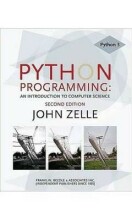Try our study magic for free
Summary: Engineering Economy | 9780131486492 | William G Sullivan, et al
- This + 400k other summaries
- A unique study and practice tool
- Never study anything twice again
- Get the grades you hope for
- 100% sure, 100% understanding
Remember faster, study better. Scientifically proven.
a PDF, study it super fast
- No sign up, email or credit card needed!
- AI makes unlimited flashcards
- Get unlimited quizzes and tests
- Ask AI anything
Create a notebook
- No sign up, email or credit card needed!
- Have and keep perfect overview
- Make flashcards, notes and mind maps
- Review, test and score!
Read the summary and the most important questions on Engineering Economy | 9780131486492 | William G. Sullivan, Elin M. Wicks, and James T. Luxhoj
-
1 Introduction to Engineering Economy
-
What are the 7 principles of engineering economy?
- Develop the Alternatives;
- Focus on the Differences;
- Use a Consistent
Viewpoint; - Use a Common Unit of Measure;
- Consider all Relevant Criteria;
- Make Uncertainty
Explicit; Revisit yourDescisions;
- Develop the Alternatives;
-
2 Cost Concepts and Design Economics
-
2.1 Cost Terminology
This is a preview. There are 14 more flashcards available for chapter 2.1
Show more cards here -
Give [6] examples of fixed cost
- Insurance and taxes on facilities
- General management
Administrative salaries - License fees
- Interest costs
- Borrowed capital
- Insurance and taxes on facilities
-
Give [2] examples of nonrecurring costs
- Development cost
- Establishment cost capability/capacity.
-
Give the definition of indirect costs and a different naming
Indirect costs are costs that are difficult to attribute orallocate to a specific output or work activity.
Overhead cost -
Explain the term normally considering indirect costs
Whenallocating directly to a specific output involvestoo much effort, theallocation is done through a selectedformula . Such as,proportional .
This is done through established costs per unit since these costs are associated with a certain level of production. -
Give [4] examples of overhead cost
- Electricity
- General repairs
- Property taxes
- Supervision
- Electricity
-
Give the definition of noncash cost, include a different naming and a most common example.
Noncash cost also referred to as book cost do not involve cash payments.
depreciation charged for the use of assets. -
Life-cycleWhat [2] phases does it exist of? Where are the most costs made? Where can the most costs be saved?
The greatest potential for achieving life-cycle cost savings is early in the acquisition phase. -
Give the definition of the term working capital
Funds required for current assets (other than fixed assets such as equipment, facilities etc.) that are needed for the startup and support of operational activities. -
Give the definition of operation and maintenance cost
Includes many of the recurring annual expense items associated with the operation phase of the life cycle.
Read the full summary
This summary +380.000 other summaries A unique study tool A rehearsal system for this summary Studycoaching with videos
- Higher grades + faster learning
- Never study anything twice
- 100% sure, 100% understanding
Topics related to Summary: Engineering Economy
-
Cost Concepts and Design Economics - General Economic Environment
-
Cost Concepts and Design Economics - Accounting Fundamentals
-
Cost Estimation Techniques - Integrated approach
-
Cost Estimation Techniques - Estimation methods
-
Cost Estimation Techniques - Cost estimating techniques
-
Cost Estimation Techniques - Cost estimation in the Design Process
-
Money - Time Relationships and Equivalence - Interest basic terms
-
Money - Time Relationships and Equivalence - Concept of equivalance
-
Applications of Money - Time Relationships
-
Comparing Alternatives - Basic concepts comparing alternatives
-
Comparing Alternatives - Study analyses period
-
Depreciation and Income Taxes - Different types of taxes
-
Depreciation and Income Taxes - Introduction of concepts
-
Depreciation and Income Taxes - Gain (loss) on the disposal of an asset
-
Depreciation and Income Taxes - After-tax economic analyses
-
Price Changes and Exchange Rates - Terminology and basic concepts
-
Replacement Analysis - Reasons
-
Replacement Analysis - Factors to consider
-
Dealing with Uncertainty - Introduction
-
Dealing with Uncertainty - Sensitivity Analysis
-
Evaluating Projects with the Benefit - Cost Ratio Method
-
Capital Financing and Allocation - Debt Capital
-
Capital Financing and Allocation - Equity Capital
-
Capital Financing and Allocation - Weighted Average Cost Capital
-
Dealing with Multiattributed Descicisions - Introduction
-
Dealing with Multiattributed Descicisions - Dimensionality
-
Dealing with Multiattributed Descicisions - Noncompensatory models
-
Dealing with Multiattributed Descicisions - Compensatory models
-
Additional flashcards































